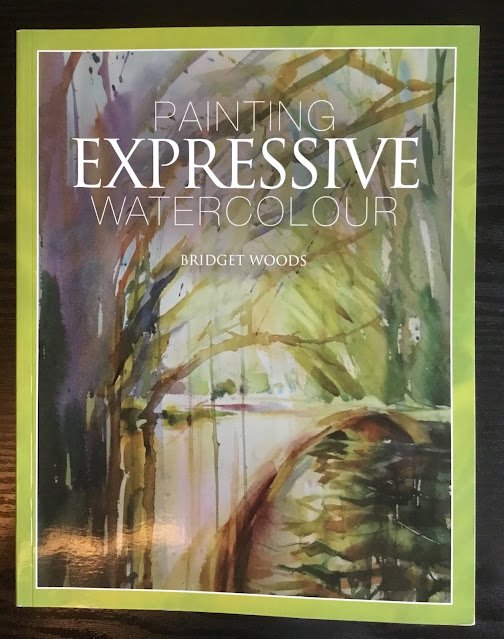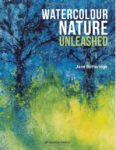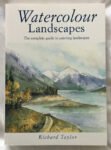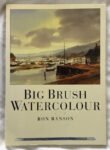This book keeps popping up on my Amazon recommendations. When I took a look inside,…

Panting Expressive Watercolour, Bridget Woods – Book Review
I’d been after this book for a while and got it as a Fathers’ Day present. It’s a 192-page paperback with some quite dense text in places so has taken me a while to get through. Apart from on Amazon, I’ve never seen this book reviewed on line, so that makes this the definitive review.
There’s about 30 pages of scene setting at the beginning. Some stuff on materials and a lot about what makes watercolour great. This sounds like a lot, but there’s still more than 160 pages to go and there are already some amazing paintings to look at and be inspired by.
Then we get to about 50 pages where Bridget really goes back to basics and tells us how to make marks. She talks about seven types of mark: wet into wet, dry into wet, wet on dry, dry on dry, SOS roll mark, drip & tip and flirty belly. Interestingly, what others call wet into wet is what Bridget calls dry into wet and, even then, Bridget’s technique is very different to the “pick up some paint straight from the tube” technique that I’ve seen in other books. But anyway, I’ve never seen this stuff explained in such detail before and can’t imagine that anybody couldn’t learn something from this.
After that, the rest of the book is a bit different. Looking at the chapter headings which talk about tone, colour and shapes, you’d think that Bridget was just churning out the same stuff that’s in so many other books. She does start off this way, talking about the importance of preparing with tonal sketches (which she calls toenail sketches). But otherwise the rest of the book takes a very different course. The clue’s in the name of the book – this is all about expressive painting. It’s sad but it’s a big surprise when a book with a title about expressive painting actually turns out to be about expressive painting! It talks not about the usual compositional rules on tone, colour and shapes but tries to get the reader thinking about how he can use tone, colour and shape to convey feelings and messages.
There are no demonstrations in this book but lots of exercises to try. I liked how, in the bit about brushstrokes, Bridget poses the reader lots of questions but then goes on to give us her personal answers to the questions – I wasn’t left confused. For the expressive exercises, there are plenty of paintings in the book that, while not always being solutions to exercises, go a long way to getting the points across.
I liked Bridget’s writing style and general attitude. There’s a message throughout the book that we’re all on artistic journeys off our own. However good you are, there are always new ways to develop. I’ve seen some Amazon reviews, by the way that complain about Bridget’s excessive use of the WW, DE, WD, DD, SOS, DT and FB abbreviations to describe the seven types of stroke that she describes in such detail. I didn’t mind this at all – if I had to check back to earlier pages to see what these letters stood for, it actually reinforced those lessons. I didn’t forget these seven strokes after putting the book down.
I generally make some comment about how inspirational the artwork is in these books as sometimes that’s where all the value is. And, while the book is great, I must say the artwork is too. Bridget has quite a loose wet style, although not as loose and wet as Jean Haines. And it’s not clear from the pages that you can preview in Amazon but she likes going abstract too. Both abstracts of the “here are some shapes and colours that convey a mood” kind and the sort of representational paintings that veer off into abstract in places.
So, the artwork is great but that’s never been enough for five palettes. The second half of the book with its expressive ideas is intriguing, but also not enough for five palettes. I may come back to revise that statement at some point though as I suspect that this might just be a case of me not yet being ready for higher level stuff like this. The bits on brushstrokes, though? I think they’re a game changer and essential reading. They are the reason this book scores five palettes. Great job.
🎨🎨🎨🎨🎨








Leave a Reply